SAFER CHOIR REHEARSALS IN THE PERIOD OF COVID19
By Mead C. Killion,
PhD, ScD (hon)
- Choir Director, Elk Grove Presbyterian Church, 37 years
- Adjunct Professor of Audiology, Northwestern University 34 years
- Plays piano, violin, and trumpet
- Sang in a Barbershop Quartet with Ira Hirsh, Daniel Martin and Dix Ward
I. On the Main Topic
A. Death by Choir Rehearsal
B. The cause: Room filling Droplets and Aerosols
C. Four rules for safer choir rehearsals
D. Finding safe masks that don’t muffle voices
E. Why singers can blend with each other even with 10 feet spacings
F. Sidebar on the negative effects of reverberation and some solutions
II. Addenda
A. Larry Royster
B. Elliott Berger
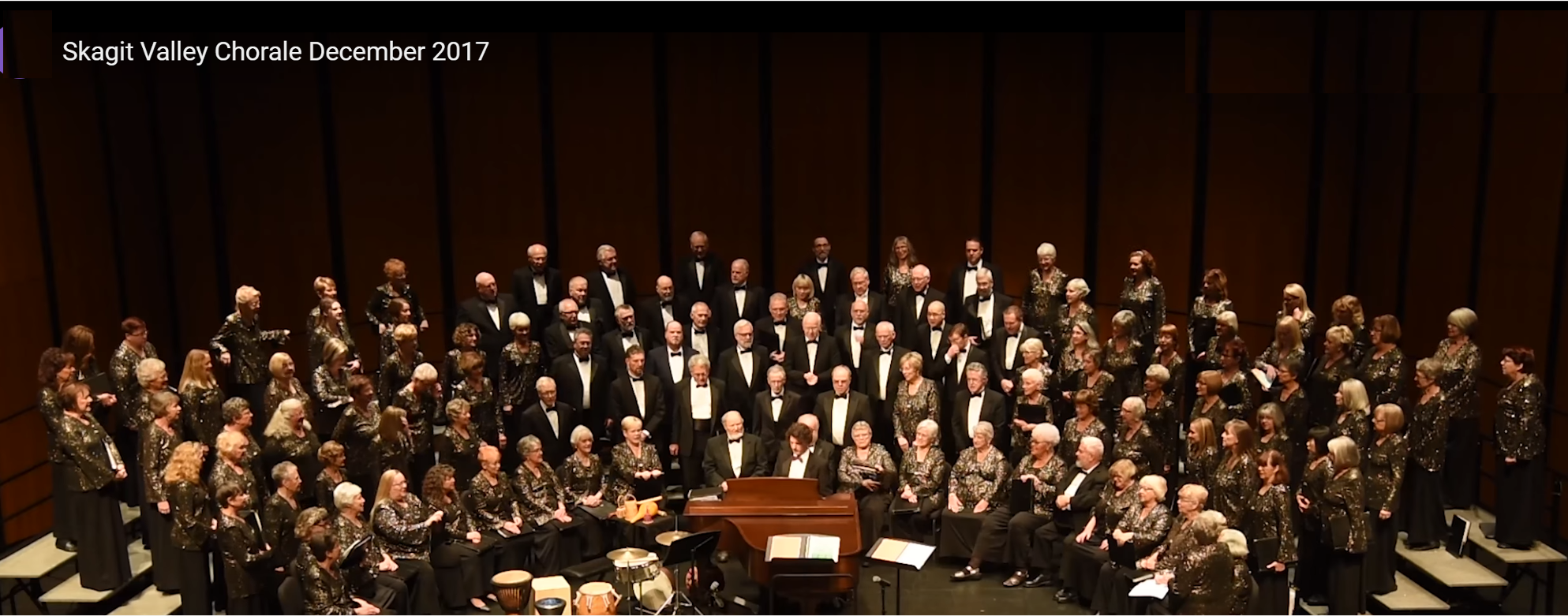
One soprano said she had a very mild cold. As a precaution, the director had the choir members spaced by sitting on every other chair.
The choir started with one fortissimo number, and sang loudly several anthems throughout the evening.
I have conducted a small Presbyterian Church choir for 37 years, so before we go into some of the examples of COVID19 infection among choirs, I decided it would be OK play a recording of our choir in happier times, when we could sing together without masks. A small part of one Christmas Cantata
A. Death by Choir Rehearsal

87% became infected with Covid19 virus, three were hospitalized, and two died.
The Skagit choir was not the only one with Covid Problems.
Concertgebouw auditorium, Netherlands: Choir performance
A series of choir rehearsals between February 25 and March 7, 2020 and a performance by the Amsterdam Mixed Choir on March 8 resulted in 102 of the 130 choir members falling ill with COVID-19. Three partners of choir members and one choir member subsequently died.
The choir held rehearsals on February 25, two days before the first official case of COVID-19 was announced in the Netherlands. Another rehearsal went ahead on March 3, with some members of the choir reporting symptoms and not attending the rehearsal. On March 7, the day before the concert, a dress rehearsal with the entire orchestra and six soloists was held in a large venue. Fifteen singers reported sick and did not attend the rehearsal. During the rehearsal, members reported being well-spaced while rehearsing but socialized and stood close in line for the coffee break. On the day of the concert, thirty members of the choir reported being ill, and in the weeks following, most of the choir members reported being ill.
Of the thousand-member audience that watched the concert, subsequent follow-up with concert goers did not identify widespread transmission.
Berlin Cathedral, Germany: Choir practice
Five days after a Berlin Cathedral Choir practice on March 9, 2020, one of the 80 participants reported that she had tested positive for COVID-19. Within two weeks, 30 members had tested positive and another 30 were experiencing symptoms.
Overall, 60 of the 80 participants that attended the March 9 practice became infected.
Few details on the setting and types of interactions at the March 9 practice could be identified at the time of this writing.
South Korea: The Shincheonji Church of Jesus
Approximately 5000 cases were linked to the Shincheonji Church
The extent to which singing itself contributes to outbreaks among church congregations is unknown, but as we are about to see, singing can fill an entire space with aerosols containing the virus.
Quiet listening and conversations are not as likely to do so.
B. Four Rules for safer choir rehearsals
1. Space the members 8-10 feet apart,
2. Do NOT sing loudly except for short periods,
3. Open an emergency exit door out of the Sanctuary to increase circulation.
4. And most importantly, wear a good mask.
In six months of following those rules, no one in the EGPC choir has been infected.
C. The Cause
How does the infection spread in a choir?
It wasn’t long before answers to that question began to appear.
For example, a sneeze can sometimes travel 26 feet!
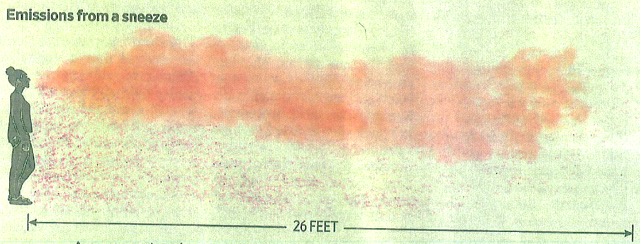

A fortissimo soprano singing can create an immediate cloud 1 ½ feet in front her, which disperses outward with time, especially if pushed by repeated singing.


(The better masks filter anything over 0.3 micron.)
D. Finding Safe Masks that Don’t Muffle voices
The N95 mask is the classic highly-effective mask. Those have gone mostly to those on the front line.
The good news is the the KN95 masks made overseas can be just as effective.
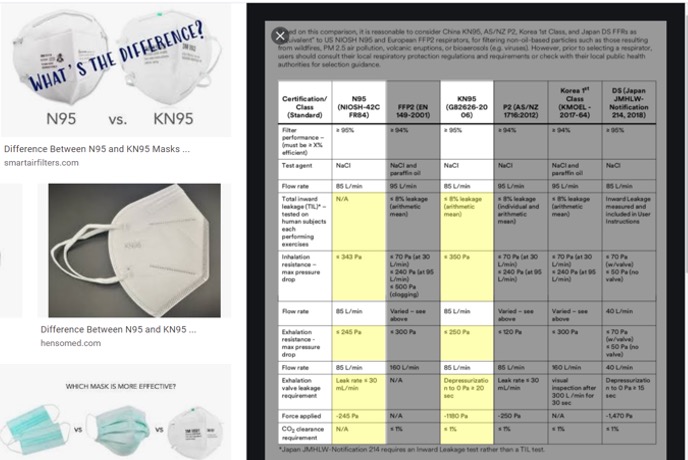
A senior scientist friend at 3M told me that the PURE MSK mask (sold by NANO AIR in this example) was as good as the M95 mask. That appears to be true. The fibers are 0.12 micron, which is one-thousandth the diameter of a human hair (0.003”).
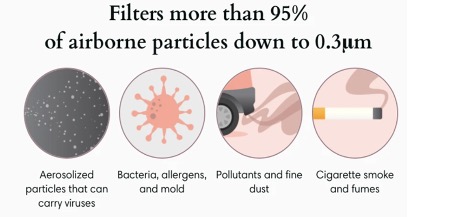

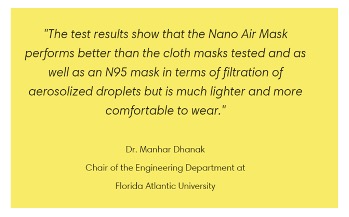
My friend’s advice was supported by other studies.
The website is found at “puremask.com”
I purchase 50 or more at a time to give my friends
They are all made in Long Beach, but the price from different distributors range from $27 to $54 per 10 pack
I have no investments in PURE MSK, nor do any of my relatives work there to my knowledge.
D. Finding safe masks that don’t muffle voices
As has often been reported, some masks do muffle the sound of the voice.
Thus, I and a friendly soprano (Gail, my wife) made A-B comparison recordings while we sang a verse of of Amazing Grace as a duet
A=No mask
B= Mask under test
A-B comparisons of duet singing A = without masks, B = various masks
1) No mask vs. Lt Blue ER mask
2) No mask vs. Vera, Tracy cloth
(both monogrammed)
3) No mask vs. Pure MSK mask
(recommended by Elliott Berger)
4) No mask vs. KN95 mask
(Top rated for safety internationally)
5) No mask vs. SGN cloth mask
(Single layer “t-shirt feel” cloth, sounds almost
transparent)
An Aside: The 8 Some Good News segments are simply wonderful. Don’t go another month without seeing one. SGN
Another aside: Any one of these masks – which you should always have in your pocket – gives wonderful face protection at 0°F and a 15 knot wind.
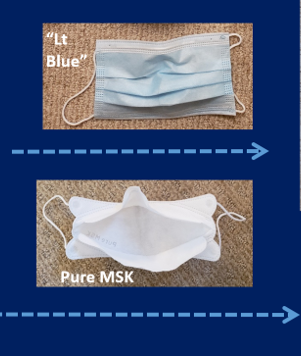
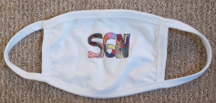
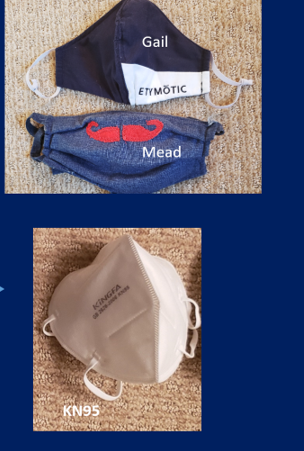
Following the rules, we meet every other Thursday night to rehearse and make recordings: Often audio, sometimes video, for the broadcast of our Sunday service. (This is a nice panoramic picture from this year’s Christmas Cantata with masks.)
This panorama makes the choir members look much closer together than they are. They are actually separated by roughly 10 feet from each other.

The rhythm section:
Rich Armandi, Bass
Cindy Lam, Piano
Bob Rummage, Drums
Cindy wore a mask during the Cantata, of course, but this is a nice picture from non-mask days.

E. Why singers can blend with each other, even with 10-30 feet spacings.
The main concern of the choir was: “We won’t be able to hear each other 10-30 feet away across the Sanctuary!”
This graph illustrates the magic:
Although the direct sound from someone’s voice drops in half every time the distance is doubled (see the black DIRECT SIGNAL line), the level of that voice STAYS THE SAME EVERYWHERE ELSE IN THE ROOM once you exceed the “Critical Distance” in a reverberant space. The critical distance in our Sanctuary is 5.8 feet, shown by the X.
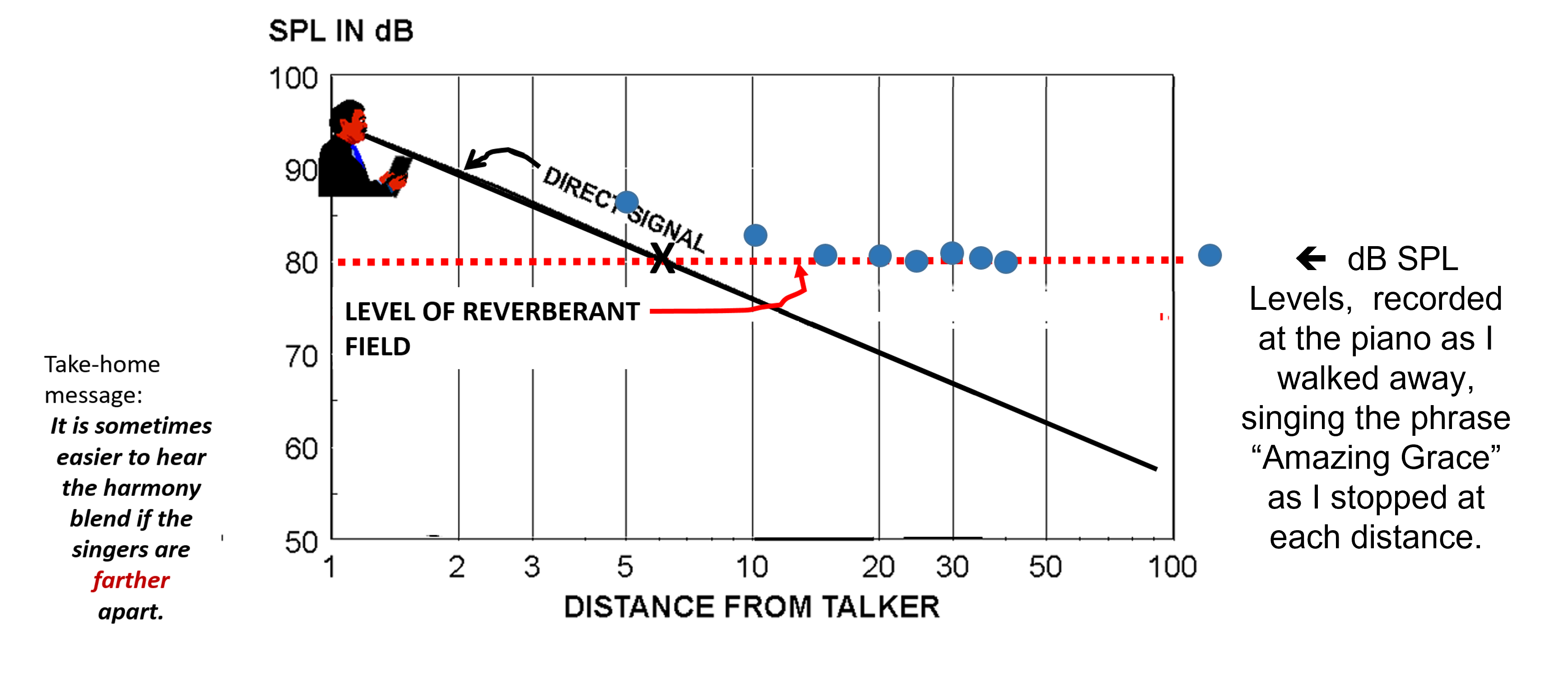
F. The use of a “telecoil” pickup to combat the (masking) effect reverberation can have on speech intelligibility
Another technical aside: The effect of reverberation is to create masking; the previous words are circulating and masking the present speech sounds. Dave Hawkins and others found that with up to a 0.5 seconds reverberation time (RT60) there is no serious masking, but after that each additional 0.1 seconds adds 1 dB of masking. So a 1.5 second RT60 produces 10 dB of masking. Everyone here has undoubtedly been in a cathedral where it was impossible to understand the talker.
With a distant talker and reverberation, you may not hear any improvement, even with a good directional microphone, if you sit in the back pews like Presbyterians. 🙂 If you sit closer to the front, there may be a dramatic difference.
Listen to a recording of a good directional hearing aid from the last pew and from a front pew. The level doesn’t change much, but the intelligibility does.
I recently observed this one Sunday morning when the pastor repeated something nice that Joan (not her real name but a church member) had told her. The pastor was standing in front of the pulpit, standing well beyond the critical distance. When the pastor asked for a confirmation of what she had said, Joan said “I’m sorry, I didn’t understand you!”
In this case, there was a happy ending: We had just installed an Inductive loop under the center pews. At a lull, I slid over to Joan and gave her a t-coil “BEAN” to put in her ear and motioned her over to the center section.
After a short time, she raised her hand and nodded. There is a happy sequel:
Her regular hearing aids already had a telecoil-coil switch which she had never activated. The next Sunday she reported she had switched to t-coil and for the first time she understood every word.
The next slide is a nice demonstration of the improvement with a loop system, sent to me by Julliette Stearkins, the leading evangelist for t-coils.
The following A-B comparison recording was made by Juliette during a Senior Citizens meeting in Oskosh, WI.
First you will hear the talker from a middle seat in a somewhat noisy meeting, then it switches to telecoil.
1. Wear a good mask
2. Space singers apart
3. Avoid prolonged loud singing
4. Provide increased ventilation
This is now the rule at many places. Some examples from VanderCook College of Music:
https://youtu.be/4nAkDJ5qUp4
This shows safely spaced members of the Orchestra. Next two slides: Choir, and Band
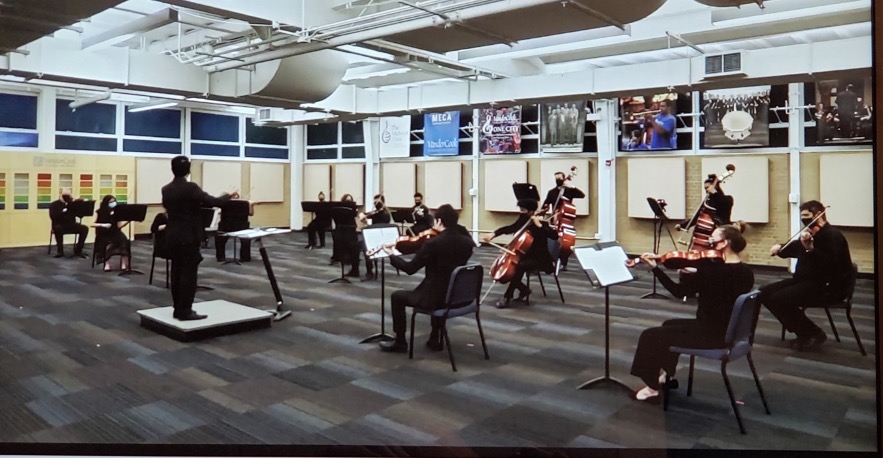


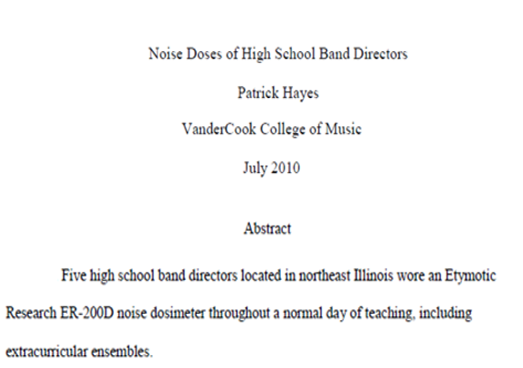

Volunteered reviews of Etymotic MusicPro Electronic Earplugs
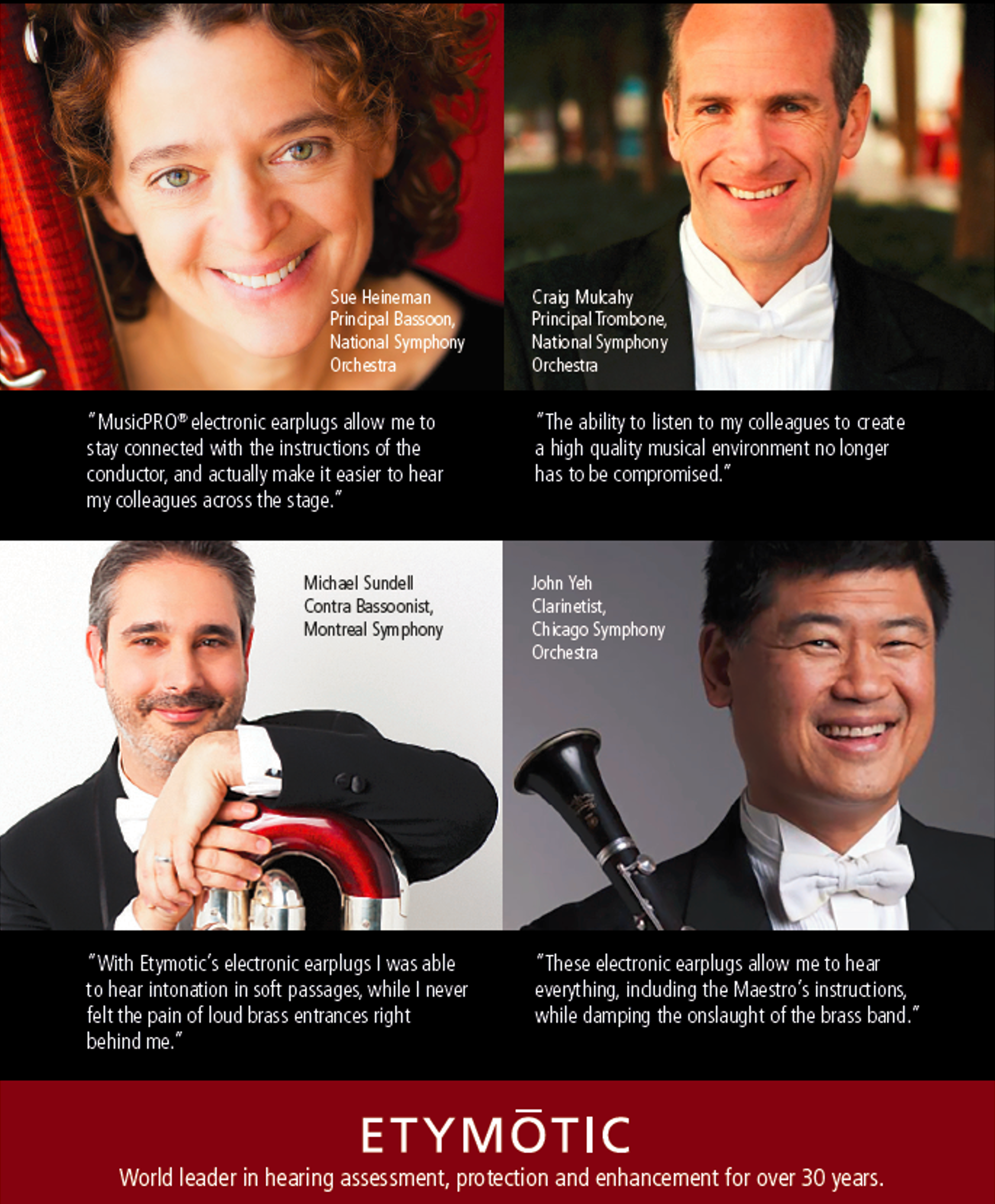

The End – almost
An addendum with favorable comments about some contributions of Berger and Royster follows.
Elliott Berger: A good scientist to have around!
a) He has absolute integrity
b) He is a loyal friend
c) He has a wonderful sense of humor
d) He is a wonderful teacher (just look at your hearing protection slides and count how many came from Elliott)
e) He has made astonishing contributions to hearing conservation
i) physiological noise artifacts
ii) painstaking standards efforts
iii) the world-class EarLogs tutorial series
iv) Limits to performance of hearing protection
v) Plastic Fit-Test block, which shows your ability to roll down foam earplugs
and rates your performance — from stupid to good to astounding
and thus a reference for real-ear insertion gain measurements on hearing aids.
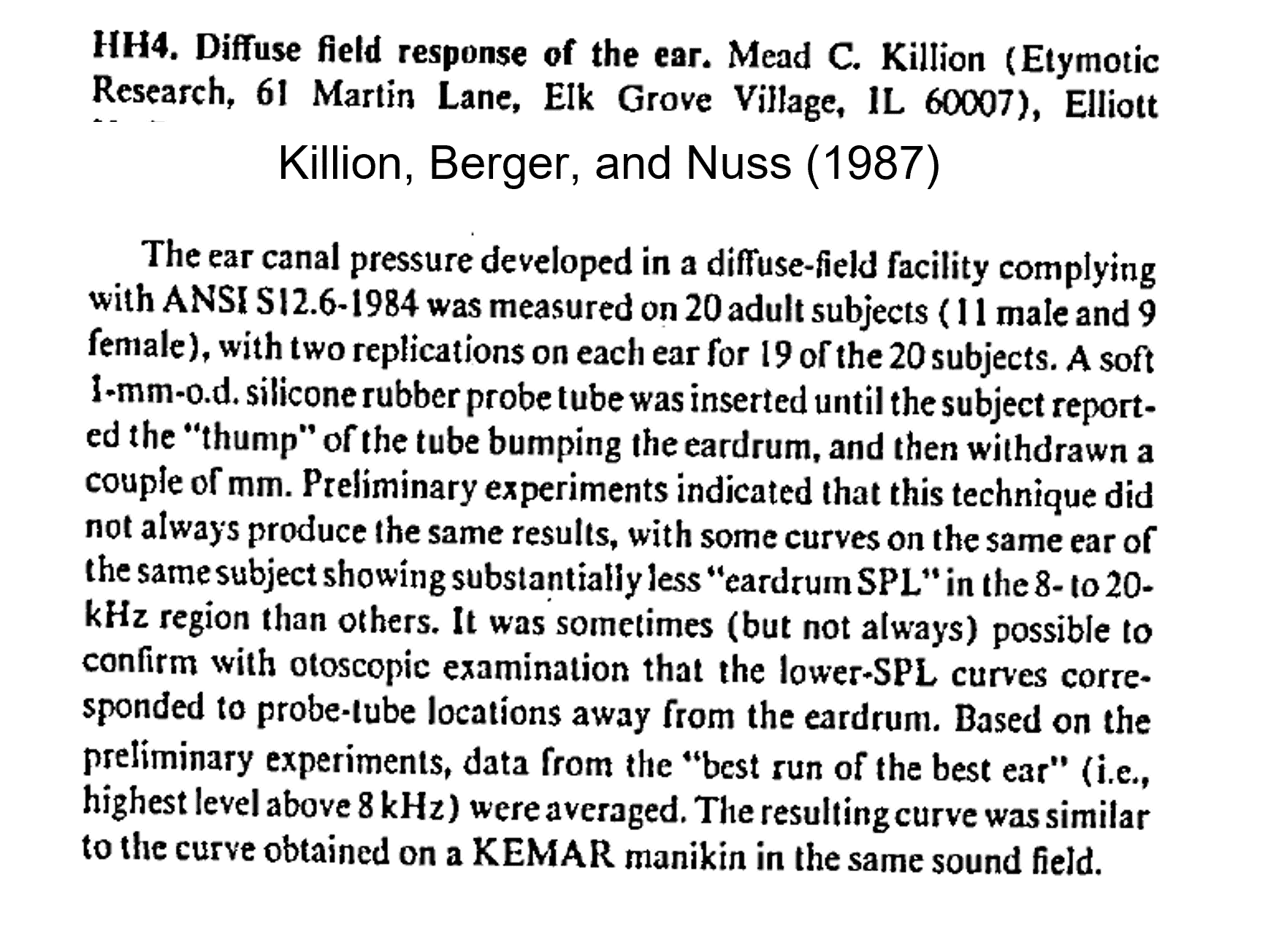
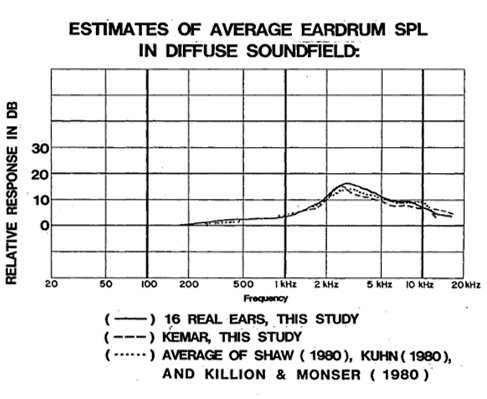
ready-to-use HiFi earplug .
Jonathan Stewart and I proudly took a prototype of the new earplug he had made down to Indianapolis to show Elliott, hoping that E-A-R would be interested in selling it (along with Etymotic Research).
Elliott and the engineer, Bob Falco, liked the idea but said the loop of #9 vinyl tubing was UGLY!
After some discussion, they sketched a construction that reduced the length in half: The sound went out to the end and came down through a center tube.
We returned home and found we could get exactly the same response using their suggestion.
The
ER20 HIFI earplug
was born!
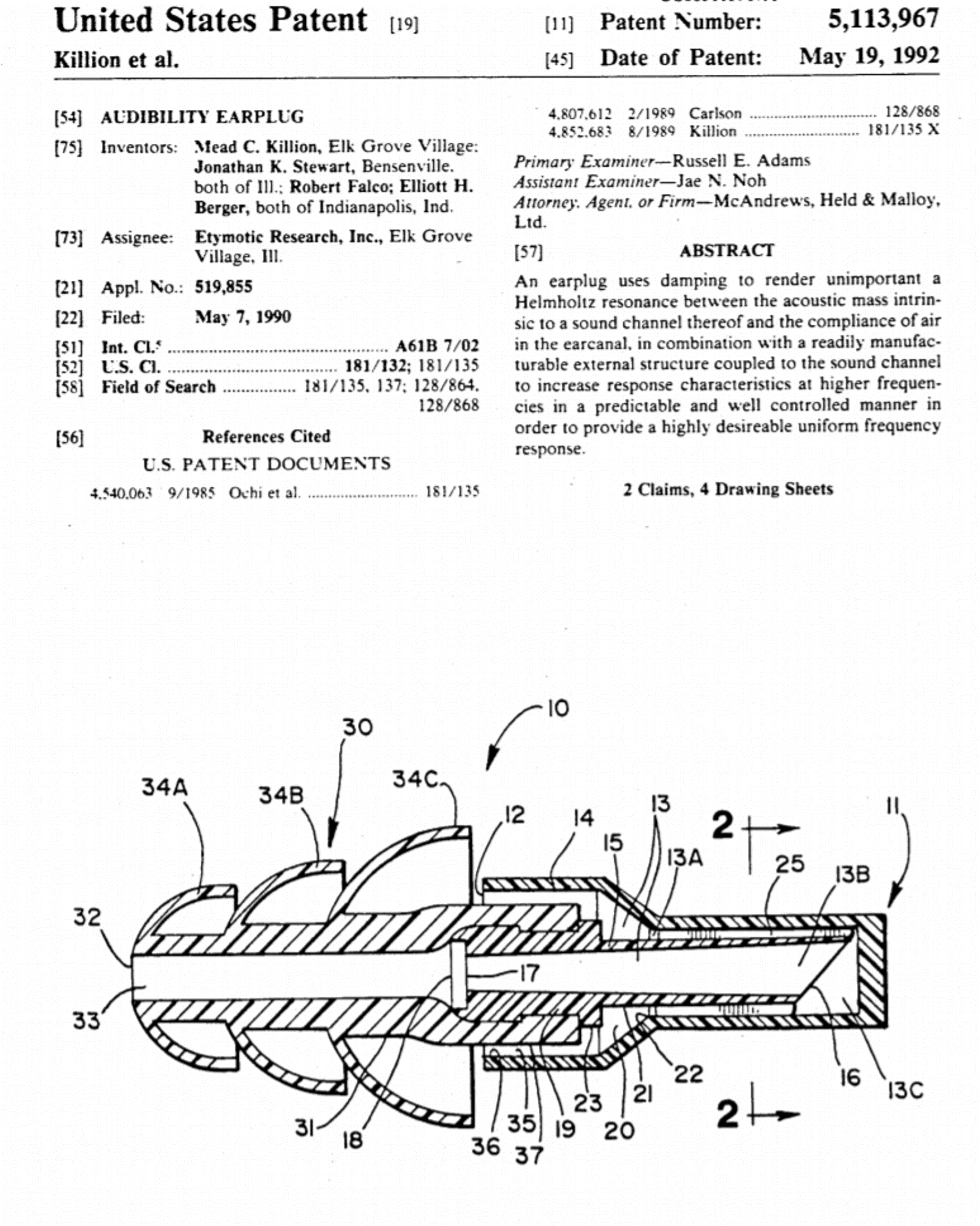
Despite the contribution of E-A-R scientists, the earliest visit to the E-A-R sales and marketing team was not an instant success.
In fact, as we were about 30 minutes away from Indianapolis, we called to check in and were told that they had so many things scheduled for the meeting that there would not be time for our presentation! We pointed out how far we had driven for that meeting and asked if we could at least present during lunch – to which they agreed.
The sales team was initially unfavorable to the idea of an earplug with an NRR of only 12 dB: “We have learned that what sells best is the highest NRR for the lowest cost.”
Of course, the 12 dB NRR figure came from subtracting 5 dB (twice the 2.5 dB standard deviation of the measurement), plus another 3 dB just to be sure. (I checked his arithmetic, of course.)
In fact, Elliott’s lab results showed the across-frequency-average for the subject group ranged between 18 and 22 dB: The grand average was 20 dB.
But even if the true average was only 12 dB, Larry Royster – who had made countless measurements in factories – concluded (in a publication):
1. “Of the 1/3 of all factory workers who need protection, 76% need less than 10 dB,” and
2. “Too much attenuation leads to non-use!”
His data saved the day!
Larry also inspired my favorite paper title: Parvum Bonum, Plus Melius: Loosely translated,
“If two aspirins are good, why not take the whole bottle?”
The good news: I can’t speak for 3M sales, but I would guess that together we have sold several million ER-20 earplugs.
One might go on to estimated that by now, 20 years later, hundreds of thousands of musicians and workers have normal hearing as a result.
Roysters reported that the barriers reduced exposure by 3 dB in the viola section
but increased it 3 dB for the bassoons!
Ironically, Violist Bob Swan and ContraBassoonist Burl Lane were two friends who formed the “Sound Level Committee” among the CSO players after Bob had a severe temporary threshold loss after sitting with his head in the mouth of the trombone behind him during a production of Damnation of Faust, with 90 orchestra players, 100 choir members, four soloists and the conductor on the old, small stage at Orchestra Hall!
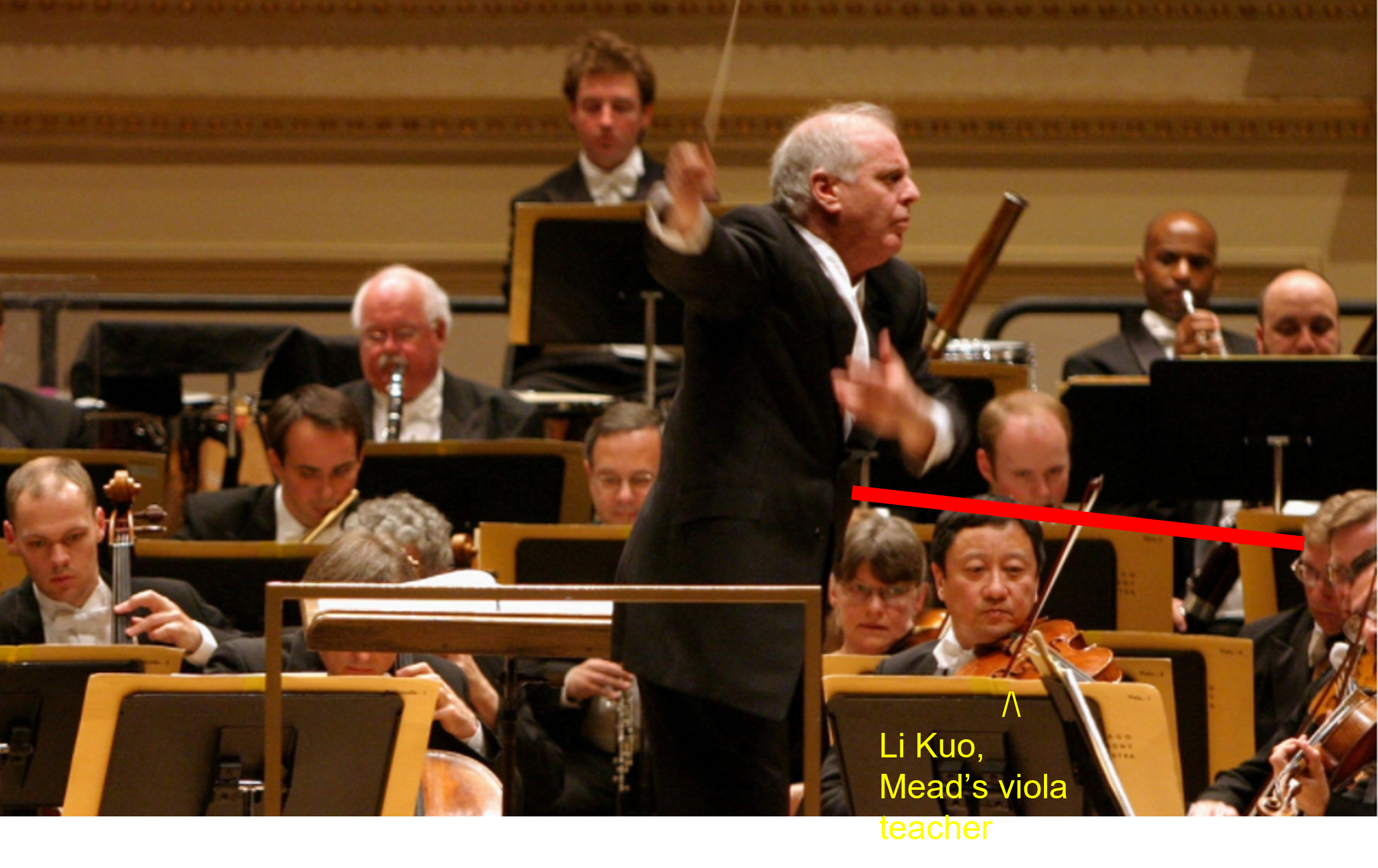
Approximate Location of Plexiglas Barrier;
Bassoons behind, Violas in front.
A simple lab experiment gave the same result:
A similar-performance barrier increased the
Awt SPL 3 dB behind and reduced it 3 dB in front.
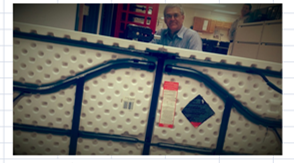
Finally, Elliott Berger has given us an incredible storehouse of information:
Can’t remember the url? Simply Google “3M earlog” and go down to “Earlog Index”
You must go there and see! (Four ** items have been replaced.)

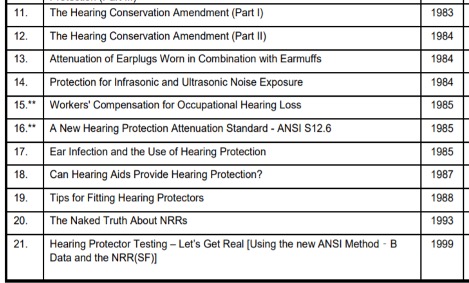
TO CONCLUDE REGARDING ELLIOTT BERGER:
f) He is passionate about misguided air bag laws
g) He is stubbornly argumentative, willing to go to great lengths and lengthy scientific experiments to demonstrate that he is right and everyone else is WRONG.
h) He is, however, – usually — right
I have been most honored to publish important papers with him, especially since he often did most of the work

